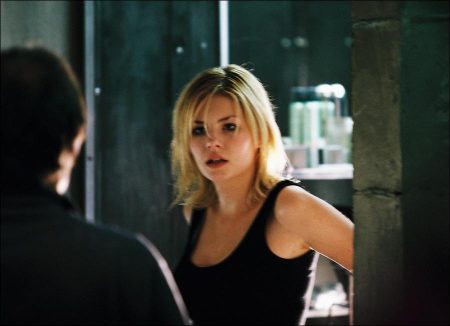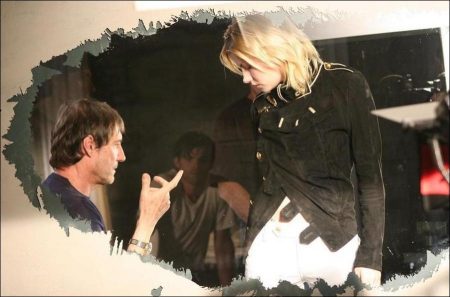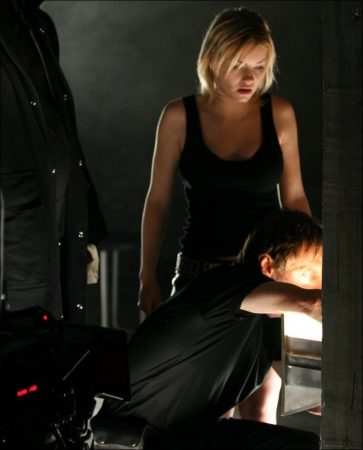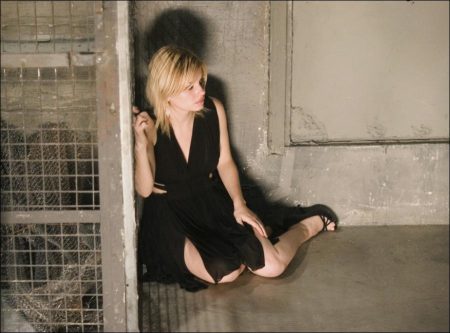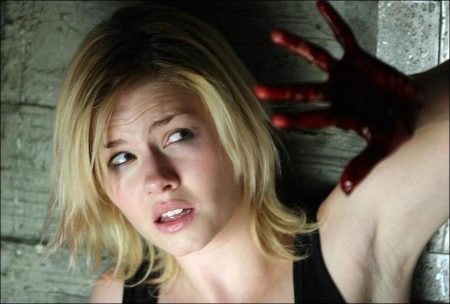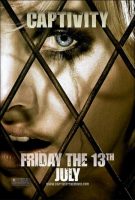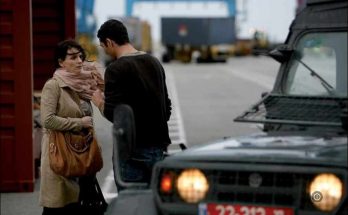All About Captivity
Captivity Movie Trailer. The producers all agreed that Gillies was a very solid fit for his role. Speaking about the role of Gary, Damon states, “Even though the character seems simple, as you find out during the movie he is rather complex. We needed somebody who could give us the boyishness and the complexities as well. After testing many, many young actors everyone felt that Daniel Gillies was right for the role.”
Speaking of the complexities of Gillie’s role and his acting talent, Cuthbert states, “to pull that off and then to go back and watch the movie again and have that all really make sense and play out with the knowledge of who he really is, is very complicated for an actor and I think he’s done a really great job.”
One of the most interesting elements of the story is the use of darkness and light, playing on Jennifer’s fears both visually and emotionally. Roland Joffe reflects, “One of the themes of Captivity is darkness and light. Jennifer Tree has a phobia about darkness. Her captor plays on this, rewarding her with light, punishing her with darkness. But light reveals terrors, turning darkness into a refuge. A refuge, however, that, in turn, unleashes greater fears.” While each member of an audience has his or her own unique phobias, we can each relate to being confronted with an uncomfortable, frightening, threatening experience. Oftentimes, the cells of fear that lie in the recesses of our brain are merely of our own creation, the mind-forged manacles holding each of us prisoner.
Roland Joffe hopes to explore this idea throughout Captivity. He states, “Some people are captive to external forces and some to internal ones. It may be a cell that holds us in captivity or maybe captivity is a twist in the mind that holds us in its grip.” Jennifer’s internal torment explored so well by Ms. Cuthbert parallels her physical reaction to her confined space.
The both Russian and American crew worked tirelessly with the goal of making the best film possible. Director of Photography, Daniel Pearl, was diligent in striking just the right notes of color to illuminate a scene akin to any major blockbuster film. With the themes of darkness and light plaguing the main character of Jennifer, Pearl was able to create these extremes to convey the emotions of the moment while still maintaining beautiful looks.
Production Designer Addis Gadzhiev created a well-designed physical space in which the actors could work, adding to the depth of the characters themselves. Through email correspondence, Joffe worked closely with Gaszhiev to create a very specific look for the film. Damon is one of many who highly compliment Gadzhiev’s work. “I think that Addis, as a production designer who has never been in America yet was able to capture perfectly the feel of an American middle class home in NY, did a superb job.
” Of course, the sets still needed to be approved by Joffe when he returned to Moscow for one month of pre-production just before the start of principal photography. Konov recalls, “when I saw his eyes and his mimics, his impressions when he came to the set I realized that everything is ok, everything is good.” When finished, the two sets on the sound stages of Mosfilm would measure over 150 square meters. One stage encompassed the captives’ cells and the captor’s observation room, and the second stage was the two story house.
Mosfilm’s art department head, without ever having visited the United States, masterfully recreated an early twentieth century New Jersey home in the middle of Moscow using images from books and the internet. The result was a space that followed the old platitudes of architecture – form and function. Aesthetically, the sterile space provided the perfect backdrop to mirror the frustration and fear of the characters in the film while still being beautiful in its simplicity.
One of the biggest challenges of the film was the language barrier between the Russian and American crew. Damon reflects that it wasn’t always easy, especially as, unlike several recent films shot in Russia, over 80% of the crew for Captivity was Russian.
Damon recalls, “there were about a dozen translators assigned to the crew, but they often did not understand the motion picture technological terms that both sides used. The Russian boom operator, without the knowledge of the English language, didn’t always have the boom in the right place at the right time. The Russians were not used to synching sound with their dailies which caused problems for the American editor, Academy Award nominee Richard Nord, and the editing process fell behind.
The ever patient Roland Joffe was frustrated by the Russian special effect team because his instructions were not always easily understood. Gradually things got better, and after three weeks into the shooting, both crews began to mesh and understand the others’ needs. The non-English speaking Russians learned enough English words, and the Americans learned enough Russian terms to smooth out the communications process. The pace of shooting picked up and the film caught up to its planned schedule.
And the Russian crew, understanding the importance of taking part in the first Russian-American co-production, began to embrace the Western style of shooting, which would lay the groundwork for better handling of future Western productions coming to shoot for RAMCO at Mosfilm studios.” While the language barrier was palpable, the speed at which the two crews were able to learn to communicate is a positive indication for the success of future international films in Russia.
The experience of making CAPTIVITY has added a new outlook on filmmaking for the entire cast and crew. Minkovski states of Joffe that “he’s an incredible man with great vision and a profound philosophy.” The same can be said of the men and women who worked to make Captivity a reality, and helped to open a new door in filmmaking.
CAPTIVITY is capable of sending the message to the global film community that films can be shot in Russia, but do not necessarily have to be about Russia, and that RAMCO and Mosfilm studios are prepared to be contenders in the production of quality films.
Serge Konov remarks about Captivity that “Our goal was to shoot movies in Moscow but not necessarily about Moscow. CAPTIVITY takes place in New York, but approximately 95% of the script had to be shot on a stage.” With the rising cost of filmmaking in the United States, it is imperative that particularly independent production companies search out the next hot locations, and Moscow, with its newly renovated Mosfilm Studios, is certainly on that list.
Captivity (2007)
Directed by: Roland Joffé
Starring: Elisha Cuthbert, Daniel Gillies, Pruitt Taylor Vince, Laz Alonso, Olivia Negron, Anelia Dyoulgerova, Maggie Damon, Chrysta Olson, Michael Harney
Screenplay by: Larry Cohen, Joseph Tura
Production Design by: Addis Gadzhiyev
Cinematography by: Daniel Pearl
Film Editing by: Richard Nord
Costume Design by: Jennifer Marlin
Music by: Marco Beltrami
MPAA Rating: R for strong violence, torture, pervasive terror, grizzly images, language, sexual material.
Distributed by: Lionsgate Films, After Dark Films
Release Date: July 13, 2007
Views: 189
